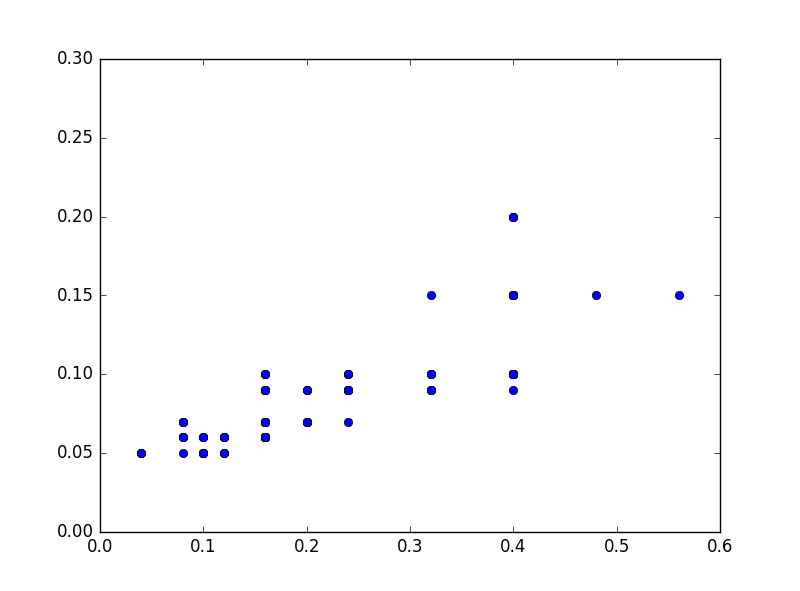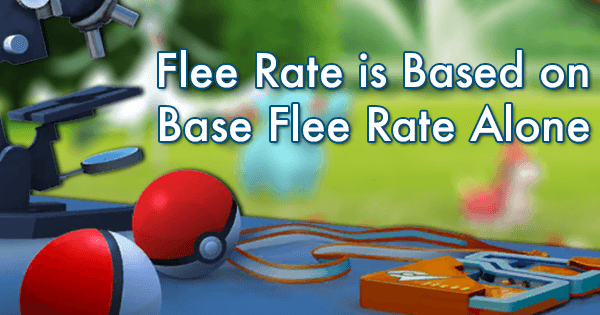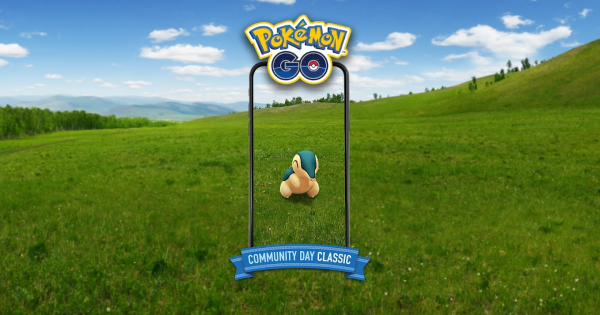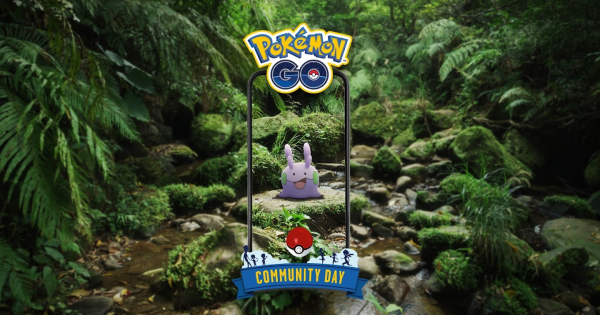Featured Contents







Introduction
In the game master file, each Pokemon has a base catch rate and base flee rate. For catches, there are many factors besides the base rate which affect the probability of catching the Pokemon. We wondered: do other factors affect the flee rate of a Pokemon besides its species-specific base flee rate? Based on an analysis of 30,000 Pokemon encounters, the answer is no.
Flee rates don't depend on CP, berries, or any other factors other than the Pokemon's base flee rate.
Charted below is every Pokemon's flee rate, from the game master file:

Analysis
Before the Pokemon GO API was deactivated, GamePress Researcher CreativiTimothy recorded over 30,000 wild Pokemon encounters. We ran tests on this data to see if the chance of a Pokemon fleeing after it breaks out of a ball was based only on its base flee rate or if modifiers such as berries, throw bonuses, the ball used or other factors play a role.
Binomial Test
During an encounter, a Pokemon only has the opportunity to flee if it is not successfully caught.
Because of this, Pokemon with low catch rates would be underrepresented in our sample, especially if a Pokemon repeatedly broke out of the ball. To keep this bias to a minimum, we only looked at the first attempt to capture a Pokemon and ended with a sample of 13,416 Pokemon that broke out the Poke Ball. These were then sorted by base flee rate to produce a table of how many times a Pokemon fled and how many times the Pokemon escaped the ball but did not flee.
A two tailed binomial test was used to determine if the observed flee rate was different than a Pokemon's base flee rate. This test is used when there are two outcomes and we want to know if the observed probability of an outcome is similar to an expected probability for that outcome. So for us, this is the observed flee rate compared to base flee rate. From this test, we found that for 8 out of the 9 base flee rates, the observed flee rate was not statistically different from the base flee rate. While the evidence is not conclusive, this suggests that the base flee rate is the average rate at which a Pokemon flees.
| Base Flee Rate | Escape | Flee | Total | Flee/Total | p-value |
|---|---|---|---|---|---|
| 0.05 | 293 | 13 | 306 | 0.04 | 0.33 |
| 0.06 | 1,606 | 110 | 1,716 | 0.06 | 0.25 |
| 0.07 | 1,448 | 87 | 1,535 | 0.06 | 0.02 |
| 0.09 | 957 | 106 | 1,063 | 0.1 | 0.15 |
| 0.1 | 3,694 | 434 | 4,128 | 0.11 | 0.14 |
| 0.15 | 2,486 | 457 | 2,943 | 0.16 | 0.22 |
| 0.2 | 1,354 | 322 | 1,676 | 0.19 | 0.22 |
| 0.99 | - | 49 | 49 | 1 | 0.61 |
| Total | 11,838 | 1,578 | 13,416 |
Test of Modifiers and Flee Rate
Our second test was to confirm that modifiers did not affect flee rates. Since our sample was limited to only Pokemon that broke out of the ball, it is possible that there is a bias due to fewer low level Pokemon being in the sample. This is because high level Pokemon have lower catch rates and thus, would be more likely to break out of a ball. To address this bias in the previous binomial test, we wanted to make sure that level had no impact on flee rates before continuing on to other modifiers.
First, we split the sample into groups based on base catch rate and base flee rate. For example, one group consisted of encounters with Bulbasaur, Charmander, Pikachu and Squirtle, which all have base flee rate = 0.1 and base capture rate = 0.16. We then ran a logistic regression for each group to see if level is related to likelihood of fleeing when keeping the other modifiers (berries, throw bonuses, curveballs, ball type) constant. This type of regression is used to see if the independent variable (in our case, level) has a statistically significant effect on the likelihood of the dependent variable (in our case, fleeing). For all of our regressions, level had no statistical effect on flee rate.
To make sure that no other modifiers affected the flee rate, we ran logistic regression again for each group using the modifiers as independent variables. None of the modifiers were statistically significant, so we concluded that ball type, throw bonuses, level, curve, and berries have no effect on flee rates. This leads us to conclude that flee rates of Pokemon are based on their base flee rate alone.
Base Flee and Catch Rate Correlated
Interestingly enough in Pokemon GO, Pokemon's Base Catch Rate and Base Flee Rate are somewhat correlated, as seen below. X-axis is each Pokemon's Base Capture Rate and Y-axis is each Pokemon's Base Flee Rate.

What this means is that Pokemon that are easier to catch also flee more frequently if they manage to break out of the PokeBall. If you ever wonder why Pidgey, Rattata, Caterpie, and Weedle keep running away, that's why.










